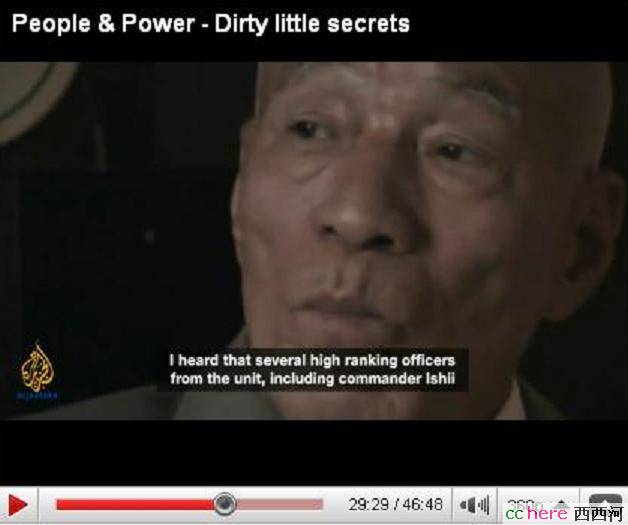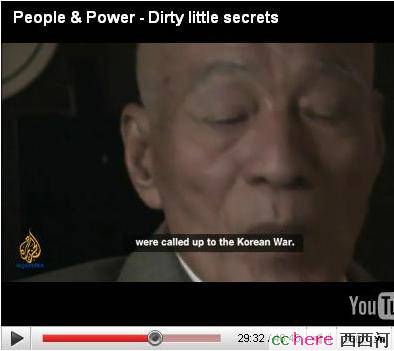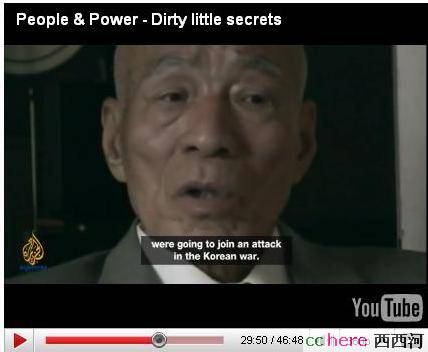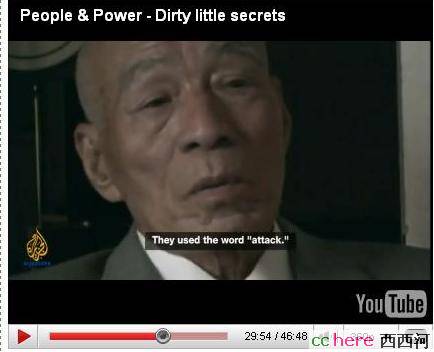主题:美军朝鲜战争中生物武器库一览(一) -- 石千里
到现在,人家都开盘了,yfb还没出来教一教大家这个虚拟语气的问题呢。
再浪费点时间吧,首先你还好意思提这个文件
1. 贴一下yfb提供的文件的一部分

对你和yfb的谬论,石千里已经反驳了,你们好象放弃那个楼的讨论了,这里再给你贴出来:
这完全是yfb的错误理解,第七条是这么写的:"If low production costs of BW agents can be realized, a partial solution may be offered to the acute need of maintaining a strong military posturefor long period without jeopardizing our economic structure. Further, the achievement of a BW capability may not compete with the procurement of our present weapons systems."可见这里没用任何虚拟语气,yfb需要重学英语语法。这样就表明撰写者们对降低生物武器成本很自信,并为决策者们展示了美好的前景"可以长期保持军事上的优势而不妨碍经济发展",这与yfb的错误理解差了几亿光年。
如果yfb把前面几页一并贴出的话,我们就可以看到撰写者们是如何得到这些conclusions的,或许能直接证实美国用过细菌武器。而这一页上的几条只能显示美国可能用过生物武器,例如最上面的一条"3. BW poessesses a great potential as a weapon of war"(生物武器具有巨大的实战潜能),"5. A more vigorous test program including large scale field tests should be conducted to determine the effectiveness of specific BW agents under operational conditions"(more表明他们已经做过类似的工作了,但还不够vigorous)。
此外,yfb的中文理解能力也有问题:"不过有一点要指出的就是,按照中国方面的说法,美军在朝鲜打细菌战远在50年的12月就开始了。"这有什么问题?因为中国的抗议书明明写着"美国侵略军自1952年1月28日起,连续多次使用以虐杀朝鲜和平人民及朝鲜人民军和中国人民志愿军为目的的,更大规模的细菌武器。"清楚表明美国曾经用过细菌武器,规模没有这次大而已嘛。
2.我早就回答你了,看来你现在不跟我纠结这个第三的问题了,你找不到证据反驳我,而且你自己现在也说是第三份文件了。
If these “field tests” were indeed undertaken, then they may have drawn again on the expertise of the Japanese biological warfare team.
那么,这里里的again一词充分说明了,日本细菌部队被美国人雇佣,而且不是第一次用到他们。并且,事实已证明如此了。LZ叫你看得最后链接中的文章,你偏不肯看,继续忽视到底是为何??你这是来讨论沟通的吗???
文章中的链接了里已经说了,再给你这样闭着眼睛说话的人贴出来:
而纪录片《肮脏的小秘密》也进一步证实了:前日军731人员证实了美国征调前日军“731部队”及“100”细菌部队罪恶累累的战犯及成员参与了朝鲜战争细菌战。其中包括, Shiro Ishii、Kitano Misaji、Colonel Ohta等。




3.你居然还说:
我是看过论证过程了,所以我同意文忠志的结论。
而你看过吗?你是不是故意不提啊。。。那好。。。我是不会一次次为你这种纯搅活的浪费时间和精力的, 我这里给你贴出来文忠志的论证过程,您的不是英语很好吗?有种你自己给大家翻译出来,然后一一反驳(用你自己说的话,请不要跳跃哦)。
The first episode concerns OPERATION TAKEOFF of President Truman's Psychological Strategy Board. This board had four contingency plans for the developing situation in Korea, and two of them incorporated 'novel weapons'. OPERATION TAKEOFF (renamed BROADBRIM) was to deal with a possible breakdown of the armistice negotiations that had begun on 27 July 1951, while OPERATION HUMMER (renamed AFFILIATE) was directed primarily to the period after a successful ceasefire negotiation, and was a plan to pressure the enemy during the political talks for a peace treaty to end the war. The second contingency never occurred, but the first did.
The negotiations for a ceasefire in Korea showed signs of breaking down shortly after they began, and were in fact suspended from 23 August until 25 October 1951. The Psychological Strategy Board [PSB] hurriedly approved TAKEOFF on 18 September 1951.(27) There are signs in the still heavily censored versions of the plan that TAKEOFF, which the head of the PSB signalled was to be handled on a 'need to know' basis, and which was framed on the basis of 'plausible deniability.' had some highly unusual aspects in support of 'the political, economic and military courses of action as planned for this eventuality that went far beyond a proposed leaflet drop on China. Collateral documents reveal the secretary of defence complaining about one of the annexes to the plan, having such military and political implications and demanding planning of such magnitude, that it should be more thoroughly considered by the PSB before being handed over for action. (28)
At the meeting for what was described as the covert implementation of Takeoff,on 3 October 1951, the service personnel were hesitant, even a little suspicious. Army General John Magruder confessed that he had delayed forwarding the plan to the Joint Chiefs of Staff. Although the documents carried a memo saying that it was an approved plan, the representative of the Pentagon wanted to know why there was no formal indication of this fact on the plan itself. Why was there no box carrying the facsimile signature of the person in authority? Why was there no indication that the plan was a numbered paper in the series of PSB formal papers?' After receiving assurances, General Magruder indicated to the meeting that he would 'probably forward the plan for action tomorrow.' (29) An uneasiness, an air of reluctance, was clearly evident.
Four days later, in accordance with 'an oral directive,' three Army colonels left Washington for a top secret trip to see General Ridgway, commander-in-chief of the Far East Command in Tokyo. (30) We do not know whether this trip was part of TAKEOFF. Perhaps it was a chance event. But in another coincidence, when US Air Force Colonel Andrew J. Evans, Jr., who had previously worked in the War Plans Division, was shot down by the Chinese in 1953, he told his captors that planning for the BW campaign in Korea had begun in October 1951. His statement was corroborated by another high ranking POW, Colonel Frank H. Schwable, chief of staff of the Marine air wing when he was shot down in Korea, who added that the Joint Chiefs of Staff had sent [their] directive by hand to General Ridgway in October 1951, ordering the initiation of bacteriological warfare in Korea on an initially small, experimental stage but in expanding proportions
The second episode concerns the dual role of the air force's Psychological Warfare Division as both responsible for propagandistic leaflet drops and for biological warfare planning and operations. This dual role requires historians to check any evidence appearing in US operations orders that the Chinese version of events, based on their direct evidence, may be the correct one, and that corroborates the information in the confessions of captured US flyers.(36) Very few air force operations orders for the Korean War have come to light. But those that have raise questions about some B-26 missions. On May 19 through May 23, for example, the operations orders dispatched thirty B-26 aircraft on armed reconnaissance night flights to designated areas of western North Korea to hunt and destroy vehicles and rolling stock. In each case one flight of four bombers was directed to a particular place where a railway bridge or short piece of the railroad had been attacked all day by fighter bombers. Late at night the four B-26s added their ten tons of high explosives to ensure the rail cut. The after-mission reports show that the bombardier of the last aircraft dropped two leaflet bombs labeled M-105 at the very end of the attack. (37) This bombing pattern fits well with that described by the Chinese following their interrogation of captured flyers Kenneth Enoch and John Quinn.
The Chinese claimed that germ attacks were carried out by the B-26s as part of regular bombing raids, and that the germ-infected feathers or insects came in 500-pound-size leaflet bombs labelled M-105. Their prisoners told them that these bombs were reported as duds or as having no visual results owing to darkness. The purpose of these attacks was to contaminate the bombed area and disrupt the work of repair crews trying to restore the rail line bringing supplies from China into North Korea. The Chinese claim is not inconsistent with our knowledge that the US leaflet bomb had in fact been adapted and standardized as a biological anti-crop bomb, and was also considered as an anti-personnel biological weapon against the supplies and equipment of the military supply system of enemy troops.
In the wake of our book the Historical Office of the Air Materiel Command at Wright-Patterson Air Force Base in Ohio has published an historical study, 'Weapons of the U.S. Air Force: a selective listing, 1960-2000,' which lists the M105 as a biological bomb. Taking into account the evidence and analysis of our book this source confirms the link between the US Air Force biological ordinance, its use as recorded in the after-mission reports of the US Fifth Air Force in Korea and what the Chinese and North Koreans thought was happening to them on the ground via the M105 bomb. (38)
After the Chinese allegations gained world-wide attention, members of the 3rd Bomb Wing were questioned by the US Air Forces Office of Special Investigations to clear the air force of the charges. Colonel William G. Moore, commanding officer of the 3rd Bomb Wing from January to November 1952, signed a sworn statement declaring that while the allegations of germ warfare were entirely false, his flyers did fly leaflet missions, the purpose of which was to warn non-combatants in the areas adjacent to military targets that those targets were subject to attacks by USAF, thus enabling civilian personnel to avail themselves of an opportunity to escape injury and fatalities.
The appropriate time for humanitarian warnings to the villagers along the railway tracks would have been before and not after 100, 000 pounds of bombs dropped by thirty-six F-84 fighter bombers beginning in early morning and the loads of four B-26s late in the evening. Warning for the next time would ring rather hollow, since the cycle of bombing on these targets was weeks apart. Moreover, considering that millions of leaflets with humanitarian messages were being dropped by non-combat aircraft on a daily basis, one may question the purpose of this tiny offering from the leaflet bombs of the B-26s. The Chinese allegations of biological agents dropped in this fashion and in this combination can no longer be dismissed, since detailed evidence from both the US and Chinese archives show that they were quite feasible, they were in line with US capability for covert warfare and that they happened.
These two episodes support the charges made in February-March 1952 by China and North Korea that the United States was employing biological agents
这个论证过程,你怎么就偏偏看不到???
那好,你的态度既然如此,还是那句话,请您“不用拼凑式跳跃论证法”论证出我贴的纪录片和Endicott等我引用的文章,包括我的文章是阴谋论,论证出美军没有真的实施细菌战的计划,没有在朝鲜战争动用细菌战。
- 相关回复 上下关系8
压缩 3 层
🙂你自己从来没仔细看别人的回覆 Light 字2682 2010-04-11 16:59:32
🙂你又一次看文章只看一段,文件上显示的批准日期 思炎 字2581 2010-04-11 17:27:22
🙂拜托一下行不行 Light 字3393 2010-04-11 20:21:31
🙂拜托你自己吧,yfb就是看了你那个回复,引出虚拟语气大论

🙂难道文说得没道理么? 1 石千里 字804 2010-04-12 06:08:29
🙂他是故意不提文的论证过程。我贴出来,让他自己翻译解释反驳 思炎 字0 2010-04-12 07:30:29
🙂看看,又开始扯上了。 7 石千里 字899 2010-04-11 09:20:38
🙂对战沙的筒子们要求不要太高了,呵呵 1 夜月空山 字0 2010-04-13 06:52:53